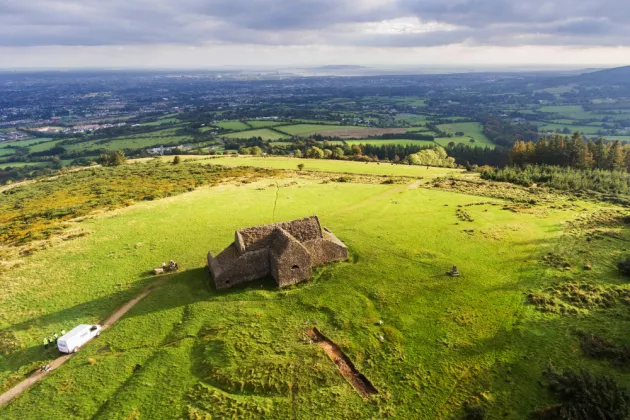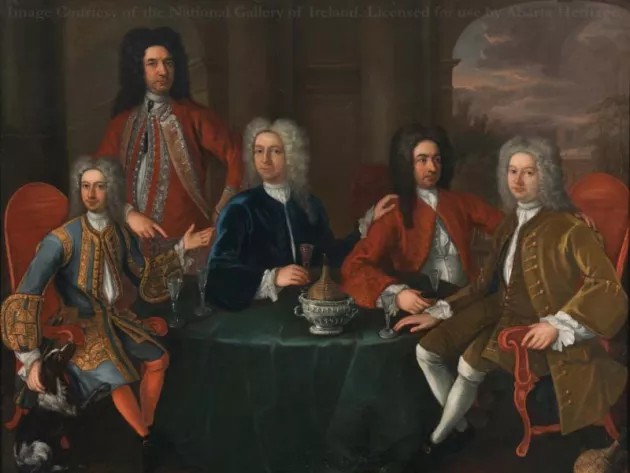Ghost Stories of The Liberties
Published on 30th October 2020

When you look at the Dublin mountains that form a ring around the south of the city, have you ever noticed one hill – Montpelier Hill - that seems to have a house or some sort of building on the top of it? This is the ruin of the once notorious Hellfire Club, a former hunting lodge that belonged to a man called Speaker Connolly who lived in Castle, where very wealthy young men from Dublin and the surrounding area would regularly meet.
They enjoyed late night parties on the hill-top, playing cards and drinking into the dark, small hours of the morning. It is said that on one occasion they were joined in the card game by the devil himself, and this is how the place got its’ name.
The Hellfire Club has a connection to one of Dublin’s most famous ghosts, and she haunts a special, if creepy place in The Liberties.
At the bottom of the forty steps that lead to St Audeon’s Church of Ireland (the old church), occasionally an apparition appears, in a misty green form that seems to float above the steps, hovers there for a few minutes and then suddenly disappears into the old stone wall beside the steps. This is a ghost named ‘The Green Lady’. Many believe that this is the ghost of a lady called Darkey Kelly who lived in the area during the 18th century.
She was an innkeeper, (owned a pub) in the 1700s. The inn was a great meeting place for many members of the Hellfire Club. This is how Darkey Kelly came in contact with Simon Luttrell, who, as well as being a member of the Hellfire Club was also the Sheriff of Dublin. The story goes that Darkey and Simon were good friends, but they had a falling-out. It was then that the Sheriff accused her of witchcraft. She was sentenced to death and publicly burned at St Stephen’s Green in 1746.
She haunts St. Audeon’s to this day.

St. Audeon’s has another strange story to tell. ‘The Lucky Stone’ was a 9th century grave-slab from an earlier church that was on this site. During medieval times it was believed the stone had magical properties, and the people of The Liberties queued to touch or kiss the stone in the hope of gaining a cure from illness or to get good fortune in the future.
The Lucky Stone was moved from the church during the early part of the 14th century by John Le Decer, Lord Mayor of Dublin. He erected a drinking fountain at the Cornmarket nearby and had the stone placed beside it. The stone ‘disappeared’ on many occasions over the years, once it turned up in Glasnevin Cemetery and another time it mysteriously appeared in Whitefriar Street Church.
One of the strangest stories connected to the Lucky Stone happened in 1826.
The stone had again gone missing but was found on a building site in Kilmainham. It was spotted by a watchman who reported that he had seen the stone glow mysteriously in the dark and then assume human form after nightfall. Adding to the mystery, workmen on the site also alleged that the stone cried out, moaned loudly and rocked from side-to- side when they tried to break it with a sledgehammer!
It was eventually re-interred in its current position inside Old St. Audeons in 1888. It is fixed firmly into place with iron holdings to prevent any more disappearances.
Submitted by Cathy Scuffil, Historian in Residence, October, 2020